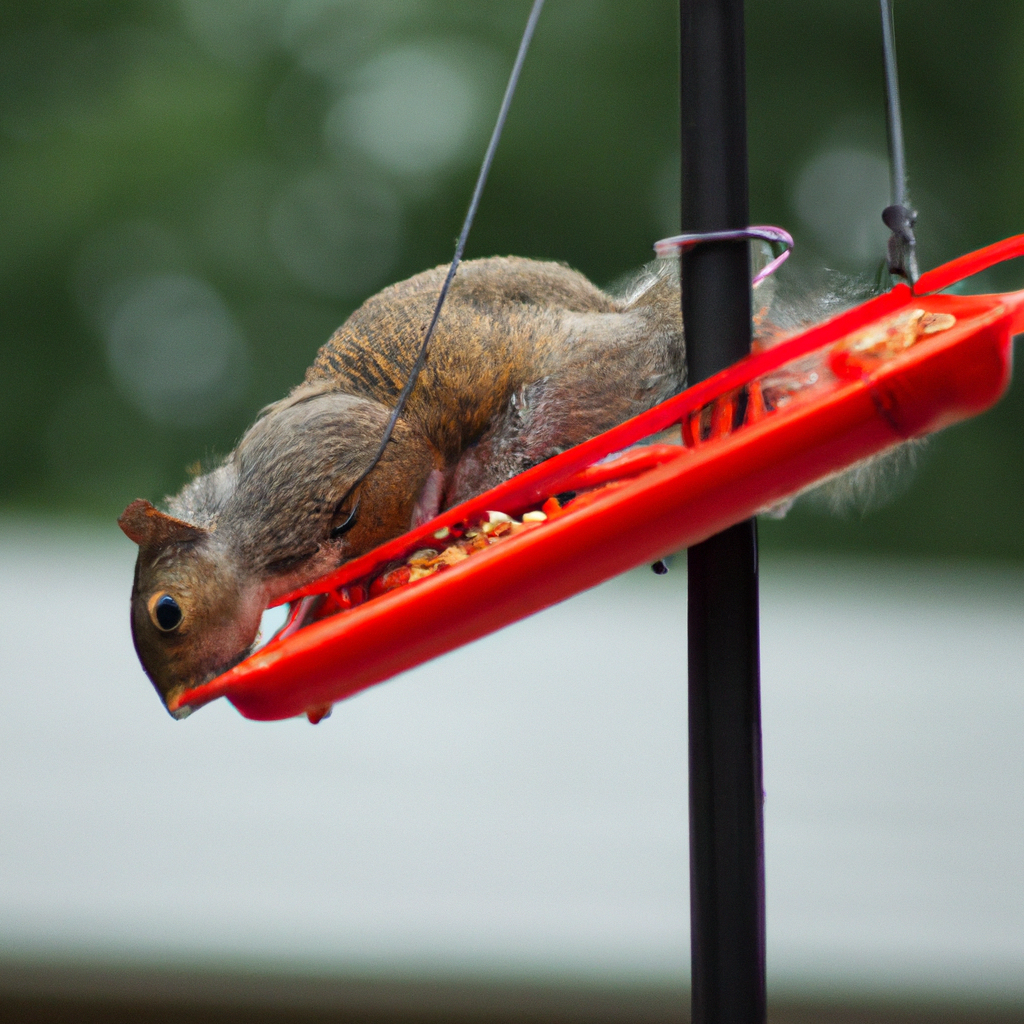Stop Raccoon Fighting Sounds: Safe Deterrent Strategies
Imagine you’re cozied up in bed when suddenly, a cacophony of hisses and growls pierces the night. You’re not witnessing the latest horror flick; that’s just raccoons outside, sounding off in one of their nocturnal tiffs. These critters aren’t shy about making a racket, and their fighting sounds can be surprisingly intense.
Understanding what’s behind these nighttime brawls is fascinating and can also be quite useful, especially if you’re dealing with these masked marauders on your turf. In this article, you’ll dive into the world of raccoon communication and learn why these creatures sound like they’re hosting a wrestling match in your backyard.
The Nocturnal Tiffs: Raccoon Fighting Sounds
Ever been jolted awake by startling screeches in the night? Chances are you’ve heard the notorious racket raccoons make when they disagree. These nocturnal tiffs are a regular part of raccoon life, occurring most often during the spring mating season and fall, when young raccoons leave the nest to find their own territories.
Raccoons possess a range of vocalizations used in various situations, but their fight sounds are particularly loud and aggressive. These sounds include growls, screams, and hisses—a cacophony that ensures everyone knows a battle is underway. Why do they make such a commotion? It’s all about dominance and territory. Raccoons are generally solitary animals and will defend their space fiercely when challenged.
Throughout these spats, you’re likely to notice specific patterns:
- A sudden onset of loud chattering as the confrontation begins
- Piercing screams that signify the dispute is escalating
- Lower-pitched grunting or growling that may indicate a physical tussle is in progress
Understanding these vocal cues can give you insight into the intensity of the fight and whether it’s a brief quarrel or a more serious altercation. If you hear these sounds emanating from your yard, it’s a clear sign that some raccoon drama is unfolding.
To help prevent these noisy nocturnal visits, consider these steps:
- Secure trash cans with tight-fitting lids or locks
- Remove pet food from outdoor areas at night
- Install motion-activated lights or sprinklers around your property
By taking proactive measures, you might just reduce the likelihood of raccoons seeing your property as a battleground. So next time night falls and the sounds of raccoon disagreements fill the air, remember that it’s their way of maintaining the pecking order—and with a little understanding and prevention, you can minimize disturbances and keep your nights peaceful.
Raccoon Communication: Unmasking the Sounds
When you hear the shrill cries and guttural growls of raccoons at night, you’re actually listening to a complex language that’s all about territory and dominance. These vocalizations serve as a means for raccoons to communicate with one another, especially during confrontations that could escalate into scuffles. And while it might sound like a cacophony to you, each noise has a distinct meaning in the raccoon world.
Let’s dive into what these sounds are really saying. A sharp, sudden bark may signal surprise or fear, a warning that a raccoon is ready to defend itself if necessary. In contrast, the low, rumbling growls are an attempt to intimidate. Think of it as their way of saying back off without throwing a paw. It’s raccoon bravado on full display.
During these vocal disputes, body language plays a critical role as well. Raccoons may stand on their hind legs, puffing up their fur to appear larger and more threatening to an opponent. Through this combination of sound and movement, raccoons convey clear messages without needing to engage physically, which could result in injury. They prefer to bluff their way out of a fight.
It’s insightful to notice patterns in these sounds too. If the noises intensify, the situation could be escalating towards a real tangle. Alternatively, if the sounds taper off, it’s likely that a standoff has been resolved, with one raccoon backing down. Understanding these audible cues helps you gauge the nature of the nighttime commotion outside your window.
For those keen on keeping raccoons at bay, certain deterrents are available. Ultrasonic repellents emit sounds that discourage raccoons from entering your property, playing on their sensitivity to noise. Another option is motion-activated lights or sprinklers, which can startle and confuse these creatures, making your yard less appealing as a battleground.
Remember, deciphering raccoon communication is about more than just identifying the sounds; it’s about understanding the context in which these sounds are made. Your newfound insight into their vocal strategies can help you better manage wild encounters and appreciate the complexity of these often misunderstood creatures.
Decoding the Racket: Understanding the Intensity
When you’re trying to figure out the chaos of raccoon sounds at night, it’s essential to know what you’re hearing. The intensity of a raccoon confrontation can be gauged by the variety and volume of vocalizations. A sudden, high-pitched screech might signal extreme distress or surprise, while persistent growling could indicate a territorial dispute brewing.
Raccoons engage in fierce vocal battles before it ever becomes physical. By listening closely, you can tell if the situation is escalating. For example, a series of sharp barks followed by low growls and snarls suggests that a fight is on the rise. On the other hand, if the sounds are intermittent chitters, it’s likely a mild disagreement that won’t lead to a full-blown fight.
Observing the duration and volume of these sounds provides additional clues. A quick burst of noise may simply be a raccoon expressing immediate discontent, while a prolonged and loud vocal exchange could mean a serious confrontation is underway.
To keep your yard raccoon-free and avoid these noisy encounters, consider installing motion-activated lights or investing in a high-frequency ultrasonic repellent. Both startle and deter raccoons without causing them harm. Remember that these animals are more scared of you than you are of them, so merely being present in your outdoor space can often keep them at bay.
Understanding raccoon vocalizations not only helps you assess the nature of their encounters but also aids in adopting the right strategies to prevent them from becoming unwanted visitors in your garden or home. By interpreting these audible cues, you’re better equipped to coexist with these nocturnal neighbors peacefully.
Dealing with Raccoons on Your Turf: Useful Tips
You’ve recognized the array of sounds that raccoons use to communicate, especially during a scuffle. Now you’re ready to take action to keep those midnight brawlers away from your space. The key is to make your property less appealing to these clever critters. Start by securing garbage cans with heavy-duty lids or bungee cords; raccoons can’t resist an easy meal and open trash is an invitation.
Make your garden less attractive by installing fencing or planting deterrents like daffodils and marigolds, which raccoons find unpalatable. If you have outdoor pets, remember to bring in their food dishes after meal times to avoid luring raccoons with leftovers.
Motion-activated sprinklers are a surprisingly effective tool. These devices kick on when they detect movement, startling raccoons and discouraging them from returning. Similarly, ultrasonic repellents emit frequencies that are unpleasant to raccoons yet inaudible to humans, making for a covert defense.
- Keep garbage cans securely closed.
- Use fencing or plant deterrents in gardens.
- Bring in pet food dishes after meals.
- Install motion-activated sprinklers.
- Consider ultrasonic repellents.
For those who prefer technological solutions, modern security cameras can alert you to raccoon activity, allowing you to respond swiftly. Some homeowners find that a combination of these methods works best, creating multiple layers of deterrence.
Remember to regularly check for and repair any small holes or entry points. Raccoons are agile climbers and good swimmers, making them adept at finding ways into unwelcome areas. Use durable materials like metal mesh to block any potential entrances.
Regular maintenance of your property is crucial. By keeping up with these actions, you decrease the odds of raccoon visits and the subsequent noises that signify their presence. As you implement these strategies, you’ll find peace of mind knowing you’ve taken proactive steps to deter the clever raccoon.
Conclusion: Exploring the World of Raccoon Fighting Sounds
You’re now equipped with the knowledge to minimize raccoon encounters and the unsettling sounds of their late-night scuffles. Remember securing your trash and sealing entry points are key steps to take back control of your property. Stay vigilant and proactive with the strategies you’ve learned and you’ll be sure to enjoy more peaceful nights free from the raucous of raccoon fights. Keep up these practices and you’ll not only deter these nocturnal visitors but also protect your home from potential damage. Stay persistent and you’ll have the upper hand in keeping raccoons at bay.
- When Is the Best Season for Dog Training in the US? Guide to Year-Round Success - November 5, 2025
- Why Choose an In-Ground Pool: Top Benefits for Your Home & Lifestyle - November 5, 2025
- Where Can I Advertise Driveway Cleaning Locally? Top Effective Spots to Reach Homeowners - November 5, 2025




